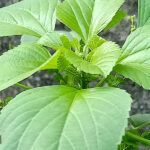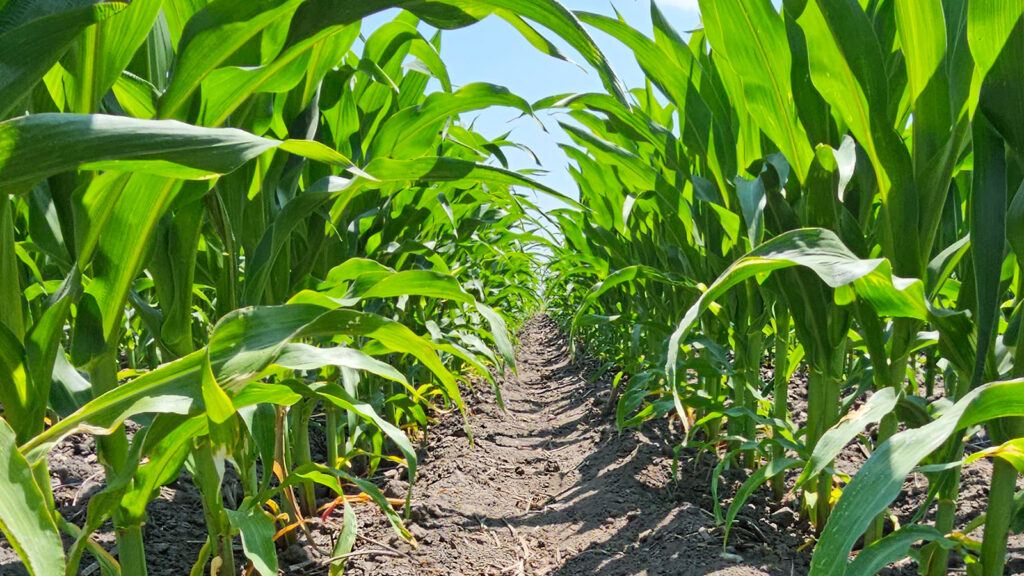Deep in the Weeds
Protect your crop early to maximize yield opportunity.

With fertilizers at a premium this year, no farmer wants to see them wasted. Or, perhaps worse than wasted, taken over by weeds competing with crops. It is more important than ever to make sure fields are weed-free, and starting early is the best way to minimize the effects of weeds.
Weeds hamper profits not only by reducing yield, but also in more hidden ways such as siphoning valuable resources from crops, says Skyler James, a crop consultant with Crop Quest.
Weeds take water, nutrients, sunlight and leave fewer resources for crops — meaning they are especially harmful for crops’ early development. The longer weeds grow, the more they take.
The first thing you need to do is start clean so that you don’t plant into any standing weed infestations.
Know the Hidden Costs
Fertilizer is a significant investment from which successful farming operations want to extract maximum value.
“If a guy has already fertilized and has weeds out there, he’s worried about the weeds using moisture and the fertilizer,” says James. “Competition is a real issue you see in the field when weeds aren’t controlled early enough. One thing that really helps is having a good crop canopy to compete with the weeds. For example, if the wheat isn’t fertilized properly, then the stand can be thin; then we have the weeds come in and compete with the wheat.”
Pete Eure, Syngenta technical product lead for soybean herbicides, agrees. “With fertilizer prices being at high levels today,” he says. “Anything you can do to maximize that nutrient-use efficiency is key — meaning removing weeds and keeping them from taking the nutrients.”
Start Clean
With early weed management, it is essential to start with a clean slate.
“The first thing you need to do is start clean so that you don’t plant into any standing weed infestations,” says Erin Burns, Ph.D. assistant professor and weed scientist at Michigan State University. She recommends burndown applications to ensure that all the weeds — any winter annuals or weeds that have emerged before crop planting — are gone.
Burns explains that she has many herbicide trials with control plots where no herbicides are applied. These control plots are excellent evidence of just how detrimental competition from weeds can be for crops.
“Even if you only had minimal weed competition, once weeds have established themselves, they’re competing with crops all season,” she says.
Eure says weeds are constantly fighting for the resources crops need such as sunlight, water, nutrients and space.
“Where we see a lot of the best success in weed control is when the grower comes out with a clean field,” he says. “With no weeds present, crops planted and a solid preemergence herbicide with multiple effective sites of action in place, the fight is largely over before it begins.”
If weeds are not controlled early in the season and become firmly established, harvest efficiency decreases, and a field’s weed seed bank grows. That means growers face unnecessary difficulties throughout the current season and at harvest and will likely start the following season in a less advantageous position regarding weed management.
Think Through Options
Growers can choose from a wide range of practices and products. The most significant opportunity for success lies in figuring out what best fits the operation and what each field needs.
Burns says growers in some areas use cover crops to help manage weeds. Cover crops create shade and block sunlight from weeds — such as the one he sees most frequently, ragweed. Effective cover cropping requires large amounts of biomass to layer the soil surface and impede weed germination.
“If you have shady conditions,” Burns says, “It makes it hard for weeds to make it through that thick layer, and we can have various levels of success.”
Mark Kitt, Syngenta technical product lead for corn herbicides, says each grower has their preferred weed management strategies. He suggests growers consider including herbicides with multiple effective modes of action in their weed-management program such as Acuron® and Acuron Flexi. Kitt says Acuron GT herbicide is the strongest post-emergence knockdown plus residual product for glyphosate-tolerant corn on the market and a great option for growers.
“Acuron GT combines four active ingredients — bicyclopyrone, which is exclusive to Syngenta — as well as mesotrione, S-metolachlor and glyphosate,” Kitt says. “It is specifically designed for post-emergence use in glyphosate-tolerant corn.”
Consider Geography
Of course, a grower’s location is also a significant factor in selecting the best weed control methods for an operation.
In Kansas, T.J. Binns, Syngenta agronomy service representative, says one weed gets most attention these days.
“Out in my world, here in western Kansas, the only weed we talk about right now — and any more — is Palmer amaranth,” Binns says. “We start with tillage, but it doesn’t help much with the Palmer because our Palmer starts emerging later than we plant our corn.”
That’s why he and his peers use different herbicides to attack the weeds head-on. For example, Binns says Acuron is an enormous advantage to growers in his area. He points out that weed control is difficult because there is no one-size-fits-all method. For example, cover cropping doesn’t work well in the dryer Kansas climate.
“The problem is we’re in a very arid environment,” he says. “Where we live, cover crops aren’t used very much because we barely have enough water.”
James agrees and adds that moisture is a make-or-break factor for crops.
“Moisture is normally our limiting factor. There have been several people trying to cover crop, and maybe it helps with the weeds, but it uses so much moisture that the crop yields are usually down in the dry land scenario,” he says. “Under irrigation, they’ve had some success, but it’s pretty limited unless you consider wheat a cover crop.”
Moisture and weather go hand-in-hand in preventing weeds. The weather, James says, heavily affects the possibility of weeds.
“If it’s really dry, which a lot of times it is, we don’t have any weeds sprouting,” James adds. “If we have moisture, we have weeds.”
- Good weed management practices help save fertilizer costs.
- Acuron® GT herbicide is an excellent post-emergence knockdown plus residual product for glyphosate-tolerant corn growers.
- Moisture considerations play a major role in some farmers’ weed management strategies.
- View the "Weed Control is Year Round" video.























